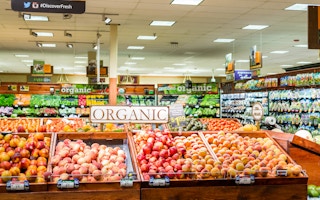Eat organic food. Choose an electric car over a gas-guzzler. Buy high-quality clothes made by fairly paid workers. These calls to support sustainable and ethical products have grown louder and more frequent in recent years.
To continue reading, subscribe to Eco‑Business.
There's something for everyone. We offer a range of subscription plans.
- Access our stories and receive our Insights Weekly newsletter with the free EB Member plan.
- Unlock unlimited access to our content and archive with EB Circle.
- Publish your content with EB Premium.
But while responsible consumption advocates mean well, they often overlook the fact that not everyone can afford these sustainable goods, which are usually more expensive than mass-market store brands or fast fashion.
The truth is, the poor are being priced out of sustainable and ethical consumer options and this is wrong for many reasons.
First, there is a fundamental injustice that access to pesticide-free food and non-toxic household items are a privilege only for the wealthy.
Second, environmentally conscious observers may assume that those who don’t buy responsible or ethical options are ignorant or apathetic. But this moral judgement is often misplaced, as many people simply cannot afford them.
Third, the ideal of a “responsible consumer society” – which the United Nations picked as its World Environment Day theme last year – will never be realised if environmentally and socially sustainable goods remain out of reach for an entire cross-section of society.
But the good news is: There are plenty of excellent ground-up movements working to disrupt this status quo and bring healthy and safe daily essentials to people in an affordable way.
These include urban farming and food cooperatives that allow communities to grow their own organic food, and sites which share tips on substituting commercial cleaning and cosmetic products with cheaper, home-made, and natural alternatives.
However, it is not possible to by-pass buying from retail stores altogether. But do the sustainable products in supermarkets have to be so much more expensive than their mass market counterparts?
And what can companies, policymakers and consumers do to help get these products into the mainstream market?
Transparency needed
In the first place, we should look at how transparent companies are about the price mark-ups of the sustainable products in their portfolio.
Sometimes, sustainable products cost several times more than mass market alternatives, and it’s not always clear if the prices are proportional to the product’s quality, or simply due to opportunistic marketing to affluent consumers.
In Singapore for example, a quick online search reveals that organic apples cost four times as much as non-certified ones. Meanwhile, a bottle of eco-friendly detergent from a specialty brand costs twice as much as a mass market equivalent.
Of course, responsible manufacturing doesn’t come cheap. Obtaining environmental and social certifications is a resource-intensive process, as is running a supply chain which follows industry guidelines on sustainability, fair labour practices, and reporting.
Similarly, a low price tag often indicates that the people behind it - from farm workers to seamstresses - were not paid a fair wage.
But the lack of data makes it difficult to determine whether the high cost of sustainable products is justified or just marketing targeted at the rich – and the only way to get this information is for companies to report it.
One manufacturer which does this is American clothing company Everlane. The firm, which prides itself on “radical transparency”, prices its goods starting at about US$15 for t-shirts to about US$300 for wool winter wear, and allows visitors to take a virtual tour of all its factories.
But more importantly, the online retailer breaks down the retail price of each product into materials, labour, transport, and other expenses, as well as its own cut.
For a US$68 linen sweater - which Everlane says would cost US$115 in a traditional retail shop - the company spends $8 on materials, $1.60 on hardware, $12 on labour, and another $1.60 on duties and transport.
The firm says it provides this itemised list of expenses because it believes its consumer “have the right to know what their products cost to make”.
Companies have traditionally been tight-lipped about their finances, arguing that revealing such information would undermine their competitiveness. But Everlane’s continuing growth despite this transparency shows that honesty doesn’t have to mean commercial suicide.
For any firm that does the same, determining if a mark-up is fair is bound to be subjective. But if prices are several times more than the cost price, then consumers should question if making goods only for an exclusive segment is truly ethical, or just hollow marketing.
Here, governments can play a part in helping to defray the costs associated with making a product sustainable, whether it is providing grants for innovating cost-effective technologies or subsidising enterprises applying for sustainability certifications. They can also help by introducing legislation on minimum sustainability standards for products.
Singapore already has some schemes in place, such as the National Environment Agency’s Environment Technology Research Programme which provides seed funding for solutions which enhance energy efficiency, reduce waste and air pollution, among others.
The public sector can also support sustainable companies by creating demand for their products. The Singapore government’s recent move to buy only paper products that carry the Singapore Green Label - a sustainability certification by the non-profit Singapore Environment Council - exemplifies this.
“
Wouldn’t it be more cost effective for companies to stop spending money on developing, designing, and marketing multiple unsustainable brands, and instead put their wood behind fewer, sustainable arrows?
Raising the bar
The other issue that needs to be addressed is the wide spectrum of standards in the consumer marketplace.
Sure, there are government regulations governing minimum safety and environmental standards for all products, but these often do not go far enough to ensure important outcomes like absolutely no deforestation or labour exploitation.
Governments are constantly tightening standards, but bureaucratic progress can be slow. There is no reason for companies to passively wait for policies when they can take the lead on improving sustainability across their product lines - not just for altruistic reasons, but because there is a strong business case for doing so.
For example, the Norwegian pension fund’s recent decision to drop 11 companies from its portfolio over links to deforestation and the fossil fuel divestment movement show that businesses need to be sustainable to stay afloat.
To some extent, western firms like Unilever and Nestle have already done this through company-wide sustainability policies, but Asian manufacturers have a long way to go. A recent World Wide Fund for Nature (WWF) report found that most Asian consumer goods firms are failing to ensure that their palm oil, dairy, and seafood products are free from environmental degradation.
But even so-called sustainability leaders have products in their portfolios with varying levels of safety and sustainability.
Unilever, for example, makes St. Ives, a personal care brand marketed as all-natural and free of parabens, a preservative with suspected but unconfirmed links to cancer.
The same company also makes Simple lotions and cleansers, and freely admits to using parabens for these, saying that they are safe for human use. This inconsistency is disturbing. Shouldn’t companies apply the same standards to all their products?
And wouldn’t it be more cost effective for companies to stop spending money on developing, designing, and marketing multiple unsustainable brands, and instead put their wood behind fewer, sustainable arrows? The savings from canning the former could fund sustainability certifications or higher wages for the latter.
These are just some ways that the private sector can ensure that their business helps the rich and poor alike.
We should all keep up the pressure on companies to do this, whether through community advocacy, social media posts, or petitioning manufacturers to make more sustainable products.
Those of us privileged enough to be able to afford ethical options should continue to buy them, to send a signal to companies that there is demand for these products. Some companies may take this as a sign to continue with business as usual.
But more visionary players can use this consumer support to make a mass-market solution, like what American electric car maker Tesla did when it launched the US$35,000 Model 3 last month. The company’s chairman Elon Musk noted that the Model 3’s development was supported by profits from earlier Tesla cars, which sold for about US$100,000 each.
Making environmentally and socially responsible products the new normal for all consumers should be a top priority for all companies today.
As long as it isn’t, this failure will always undermine their sustainability claims or worse, their bottom line.











